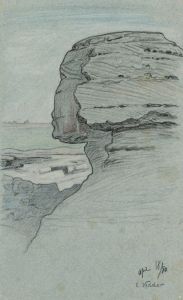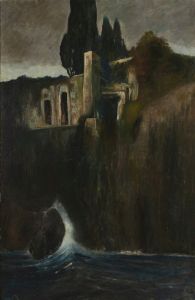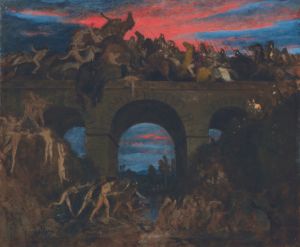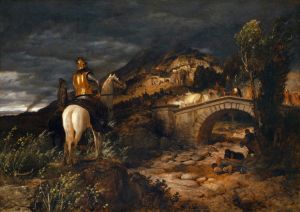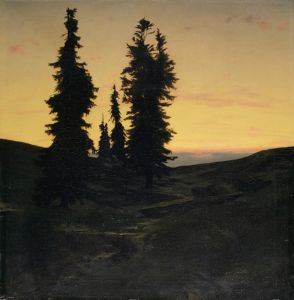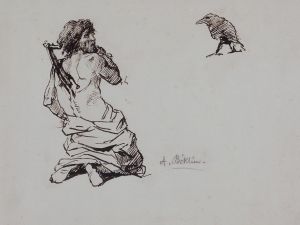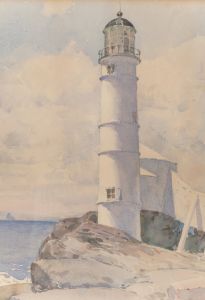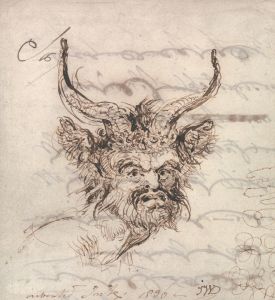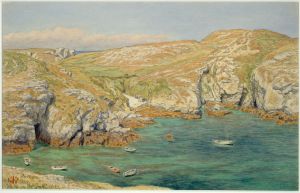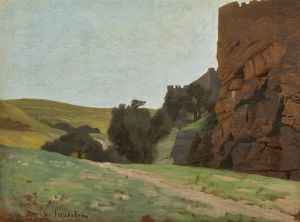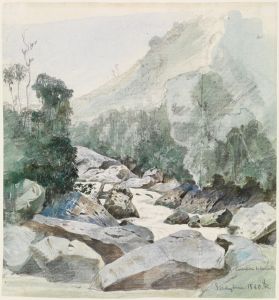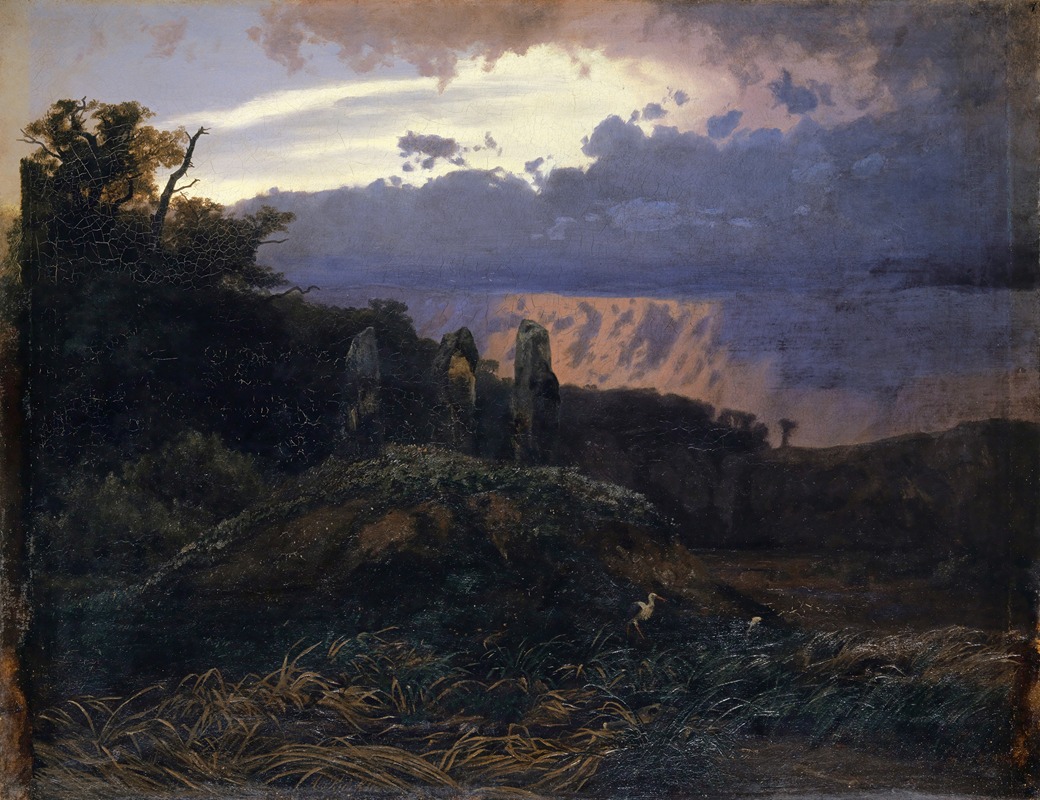
Le Dolmen
A hand-painted replica of Arnold Böcklin’s masterpiece Le Dolmen, meticulously crafted by professional artists to capture the true essence of the original. Each piece is created with museum-quality canvas and rare mineral pigments, carefully painted by experienced artists with delicate brushstrokes and rich, layered colors to perfectly recreate the texture of the original artwork. Unlike machine-printed reproductions, this hand-painted version brings the painting to life, infused with the artist’s emotions and skill in every stroke. Whether for personal collection or home decoration, it instantly elevates the artistic atmosphere of any space.
Arnold Böcklin's painting Le Dolmen is a work by the Swiss Symbolist artist, known for his evocative and often mysterious compositions. Böcklin, who lived from 1827 to 1901, was a prominent figure in 19th-century European art, celebrated for his ability to blend mythological themes with natural landscapes. His works often evoke a dreamlike or otherworldly atmosphere, and Le Dolmen is no exception.
The painting, whose title refers to a dolmen—a type of megalithic tomb structure typically associated with prehistoric cultures—depicts a scene centered around such a structure. Böcklin's fascination with ancient and mythological themes is evident in this work, as he incorporates the dolmen into a dramatic and atmospheric landscape. The painting reflects the artist's interest in the interplay between nature, history, and the supernatural, which is a recurring theme in his oeuvre.
Le Dolmen is characterized by its moody and evocative use of color, with a palette dominated by earthy tones and muted shades. The composition is carefully balanced, with the dolmen serving as the focal point, surrounded by a rugged natural setting. The painting's atmosphere is both mysterious and contemplative, inviting viewers to reflect on the passage of time and the enduring presence of ancient structures in the natural world.
Böcklin's work often defies straightforward interpretation, and Le Dolmen is no exception. While the painting does not explicitly depict a narrative, its elements suggest themes of mortality, memory, and the connection between humanity and the natural environment. The dolmen itself, as a symbol of ancient burial practices, may evoke thoughts of death and the afterlife, while its placement within a wild and untamed landscape underscores the timelessness of nature.
As with many of Böcklin's paintings, Le Dolmen reflects the influence of Romanticism, particularly in its emphasis on emotion and the sublime. At the same time, the work anticipates the Symbolist movement, with its focus on evoking mood and exploring metaphysical themes. Böcklin's unique style and vision have made him a key figure in the transition from Romanticism to Symbolism, and Le Dolmen exemplifies his ability to create works that are both visually striking and intellectually engaging.
The exact date of the painting's creation is not widely documented, and specific details about its provenance or current location are not readily available in public records. However, Le Dolmen remains an important example of Böcklin's artistic legacy, showcasing his skill in blending natural and mythological elements to create works of enduring mystery and beauty.





